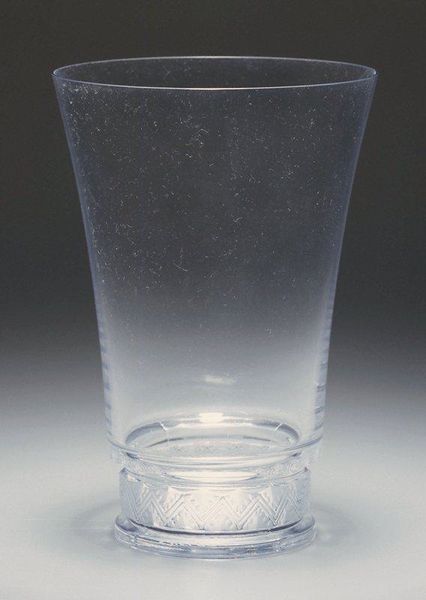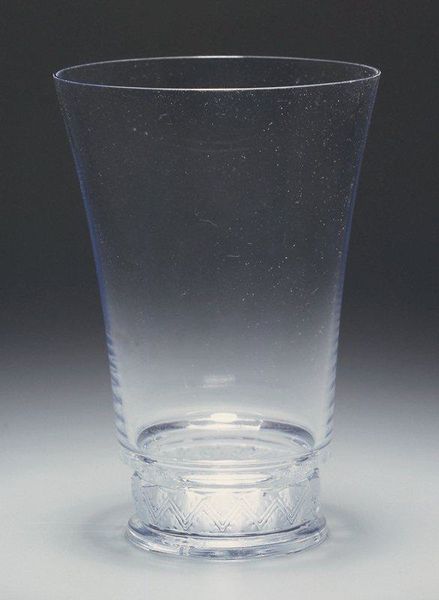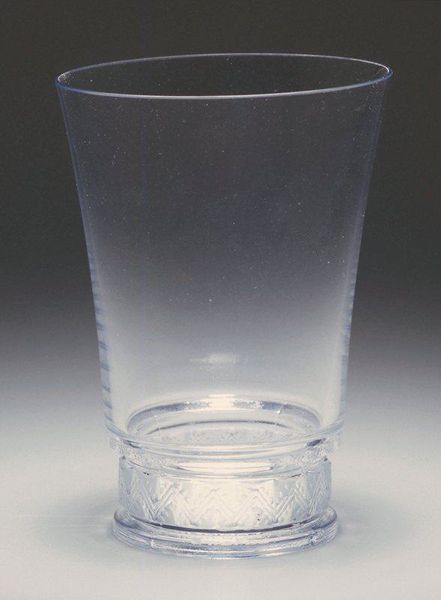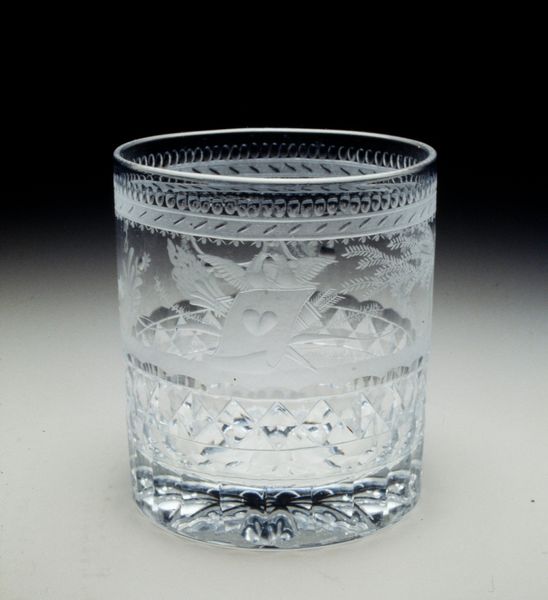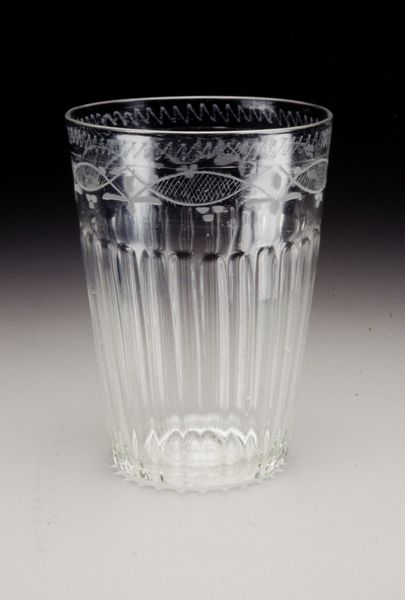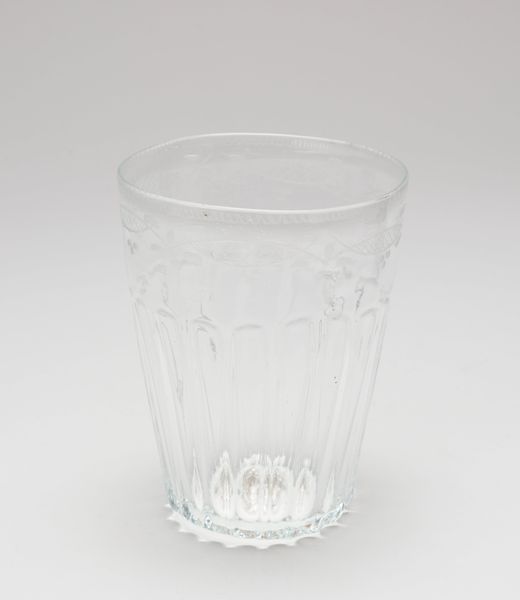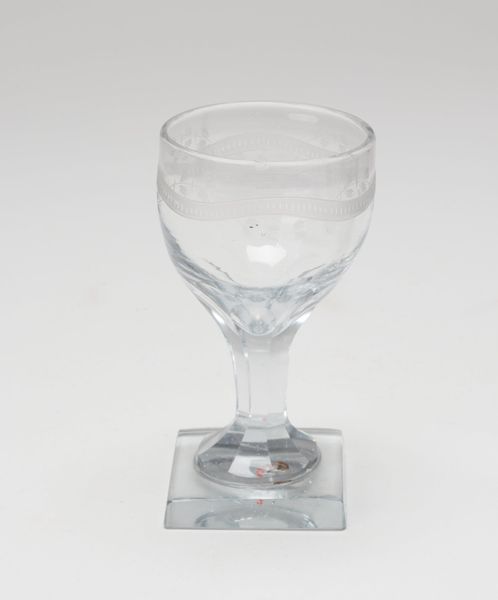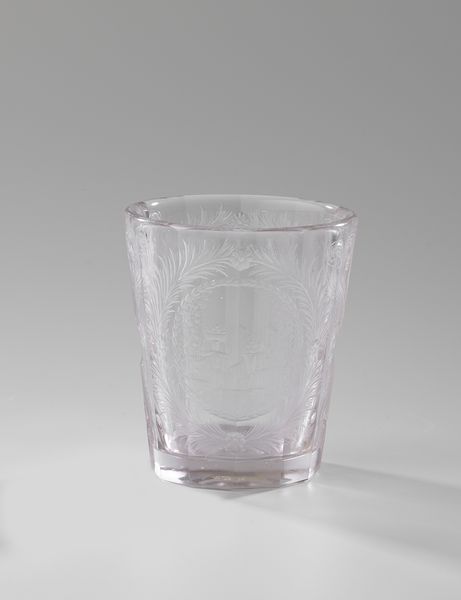
glass
#
glass
#
decorative-art
Dimensions: 4 7/8 x 3 1/2 in. (12.38 x 8.89 cm)
Copyright: No Known Copyright
Curator: Standing here before this elegant piece of decorative art, "Glass," circa 1954, created by Lalique and housed here at the Minneapolis Institute of Art. I'm struck by how Lalique marries functionality with a nuanced aesthetic language. Editor: It gives the impression of something meant to be admired rather than actually used. There’s an ethereal quality to it. Curator: That sensation, I think, is enhanced by its seeming emptiness; a kind of silent vessel waiting to be filled with meaning. Glass, often viewed as a neutral material, here speaks volumes through its subtle embellishments and carefully crafted form. Editor: Those embossed geometric patterns around the base feel very specific to a moment in design history. Were these kinds of decorative choices typical for glassware of this period? I'm interested in how the industrial production methods would impact that aesthetic. Curator: Precisely. This period saw glass moving from purely functional items toward vehicles of cultural memory, objects that echo earlier geometric motifs of classical styles, while anticipating mid-century modern aesthetics. Each piece mirrors broader societal values related to taste, design and access. Editor: So its material qualities allowed it to be elevated from mere tool to status symbol through stylistic choices? Curator: Absolutely. Through glass, themes of transparency, fragility, and even purity resonate on multiple symbolic levels. The vessel as metaphor—the body, the mind, the soul—open to receiving or being emptied. Its beauty invites quiet contemplation about the cyclical nature of time, memory, and perhaps, human existence itself. Editor: I find myself considering the labor behind each piece and the industrial processes. These things are meant to disappear in appreciating something beautiful like this. But each small act of manufacture shaped it in tangible ways. Curator: And by viewing glass from two very different vantage points—one deeply entrenched in the intangible, the symbolic resonance of it—while the other focuses more on concrete labor itself; we can both still arrive at a greater shared recognition. Editor: Exactly. Whether as a functional object made by industry, or cultural symbol representing an ideal, there's much to appreciate and ponder with the piece.
Comments
No comments
Be the first to comment and join the conversation on the ultimate creative platform.
